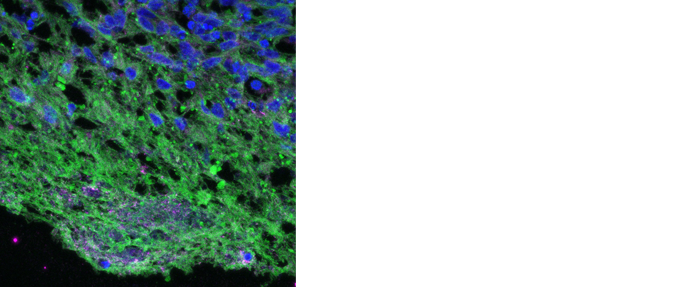
This is a significant milestone achieved within the company’s development plan and a significant progress towards testing the implants in an animal spinal cord injury model.
The implants displayed genetic and protein expression as well as cell morphology typical to functioning neural tissue. These characteristics indicate the potential to regenerate injured spinal cord tissue in humans.

Dr. Asaf Toker, CEO:
“We are happy to announce that we met a very significant milestone within the company’s R&D plan.
The development team was able to produce a complete human neural tissue implant. This process will be used to prepare the implants that will be tested in the coming weeks in experiments on animals and I hope that in the future they will be able to repair damaged spinal cord tissue in paralyzed patients.”
Image from our lab: Mature human neural implant, 28 days into differentiation (in blue nucleic acid, green neural filaments, purple acetylcholine vesicles)
